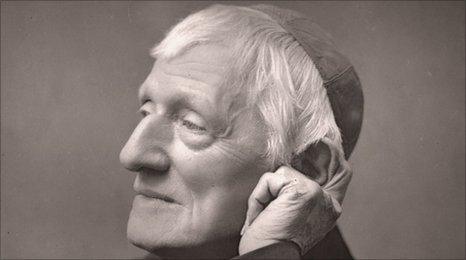Cardinal John Henry Newman: How did he become a saint?
- Published

John Henry Newman is the first English saint since the Forty Martyrs, who were executed under laws enacted during the English Reformation and canonised in 1970
Cardinal John Henry Newman has been canonised at a ceremony conducted by the Pope and attended by Prince Charles. Who is he and what did he do to achieve sainthood?
What were Newman's achievements?
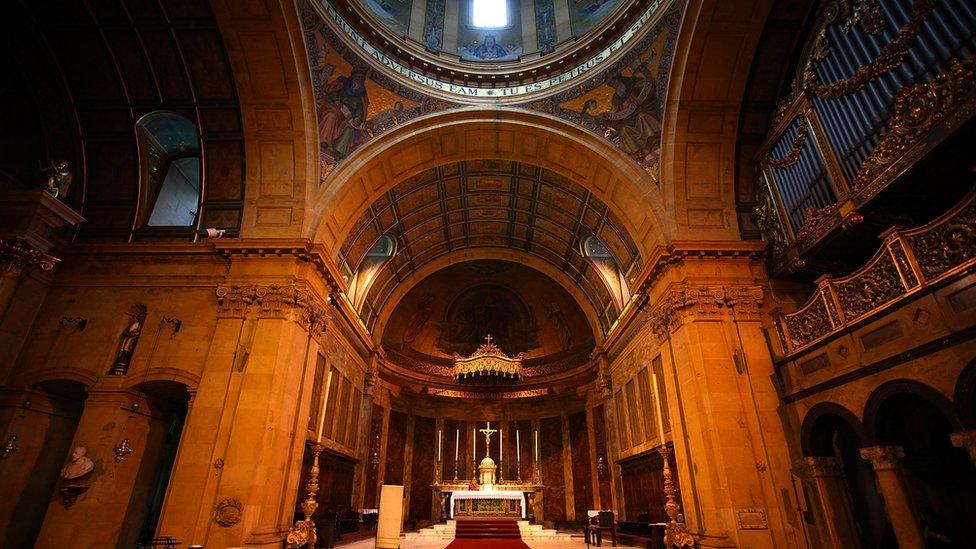
Newman founded the Birmingham Oratory
John Henry Newman was born in London 1801.
He studied at Trinity College, Oxford, going on to become an Anglican priest and a leading theologian. Newman was a founder of the Oxford Movement, set up to revitalise the Church of England, before his controversial conversion to Catholicism in 1845.
Newman went on to establish a congregation called the Birmingham Oratory and was appointed the first rector of the institution that would become University College Dublin. Late in Newman's life, Pope Leo XIII made him a cardinal. Newman died in Birmingham in 1890. His remains lie in a closed sarcophagus at the Oratory.
"Newman is very well known in the Church as a theologian, a teacher and an educationalist," said Father Francis Gavin, from the Birmingham Oratory. "But he was also a priest and a pastor. He visited the sick, the imprisoned, and those human qualities of care and friendship are as relevant now as they were in his own time."
What qualified him for sainthood?
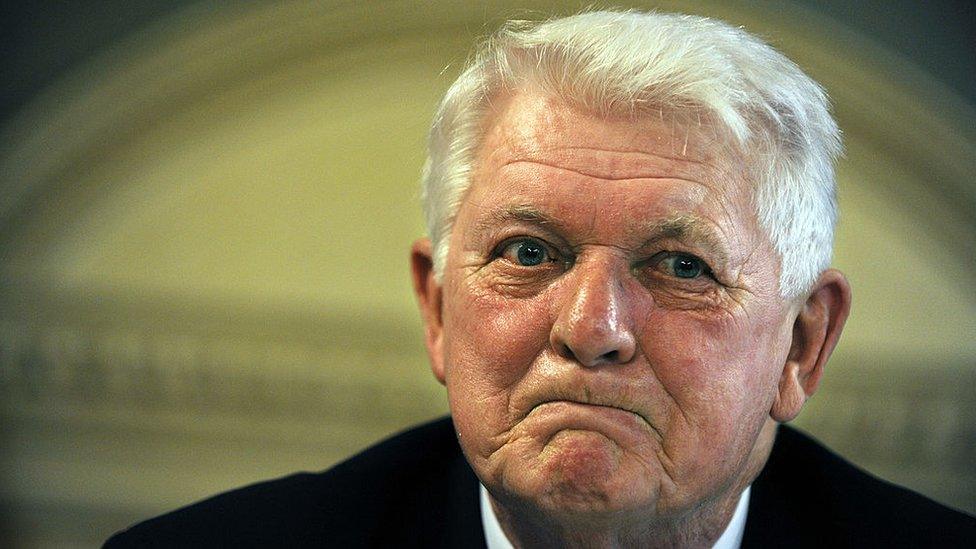
Jack Sullivan said he was cured of a crippling spinal disease after praying to Newman
The Vatican must authenticate two miracles to declare someone a saint. Newman has been credited with curing a man's spinal disease and a woman's unstoppable bleeding.
In 2000, Jack Sullivan, from Boston, Massachusetts, had just completed the second year of a four-year course to become a deacon - the level of Catholic ministry below priesthood - when he was struck by crippling back pain. "I certainly needed a divine favour at that moment, so I prayed: 'Please Cardinal Newman help me to walk so that I can return to classes and be ordained'," said Mr Sullivan.
When he woke the next morning, the pain had gone, he told the BBC, allowing him to complete his third year of classes before the pain returned, on the final day of the academic year.
In May 2013, expectant mother Melissa Villalobos was suffering from unstoppable internal bleeding that threatened the life of her child in the womb, according to the Birmingham Oratory., external "In prayer she directly and explicitly invoked Newman's intercession to stop the bleeding," it said. "The miraculous healing was immediate, complete, and permanent."
What are the earlier steps to sainthood?
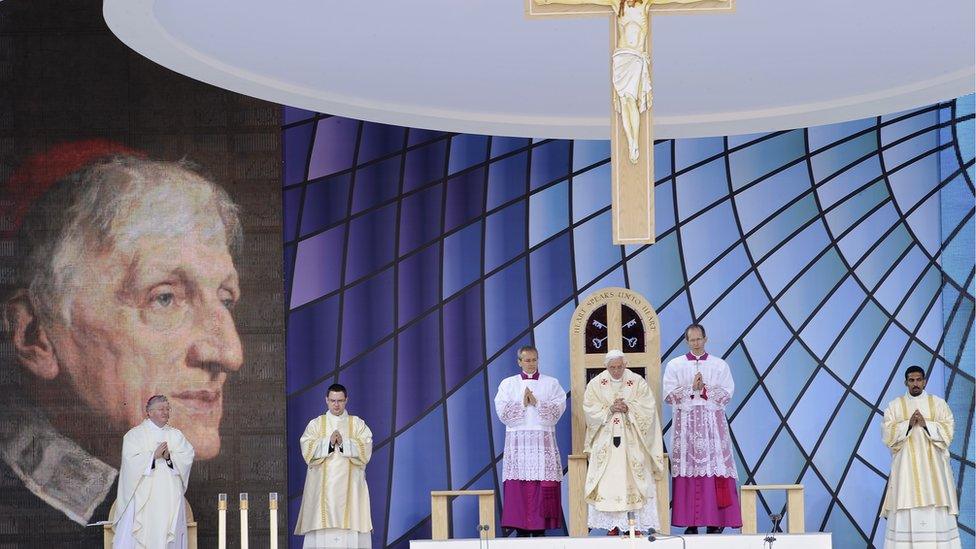
Pope Benedict XVI beatified Newman in Birmingham in 2010
The process cannot begin until at least five years after the candidate's death and involves scrutinising evidence of his or her holiness and work.
First, the individual is declared a "servant of God"
He or she is then called "venerable"
Beatification: An individual is declared blessed after a miracle is attributed to him or her
Canonisation: The candidate becomes a saint after a further Vatican-authenticated miracle
What happened at the ceremony?
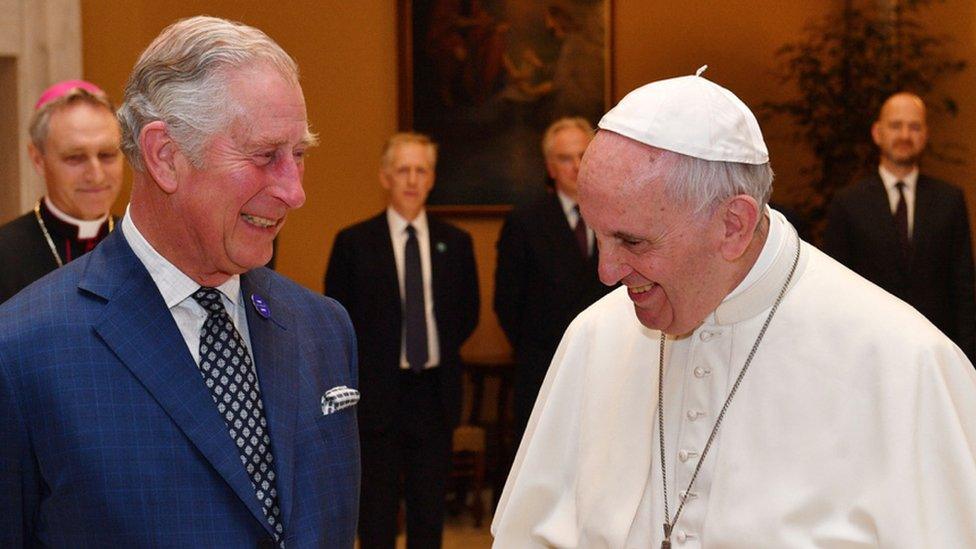
Prince Charles with Pope Francis in 2017
Newman's is one of five canonisations conducted by Pope Francis at an open-air ceremony in Rome. The Prince of Wales was the UK's lead representative and Mr Sullivan and Mrs Villalobos were among the congregation.
Tens of thousands of pilgrims, including some from the Oratory Schools Association, watched at St Peter's Square. The ceremony was screened all over the world, including at the Oratory and Bilston Holy Trinity Catholic Church in the West Midlands.
The Oratory has spent £75,000 redecorating the Newman relic casket and the Newman shrine, and a further £75,000 establishing a small museum of Newman relics on the ground floor of Oratory House.
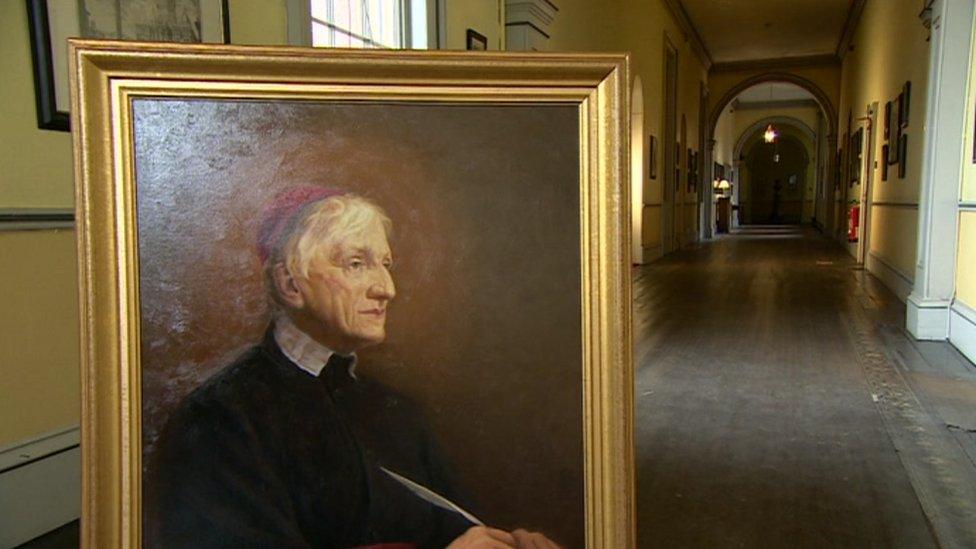
A new portrait has been unveiled at the Birmingham Oratory
What is the significance?
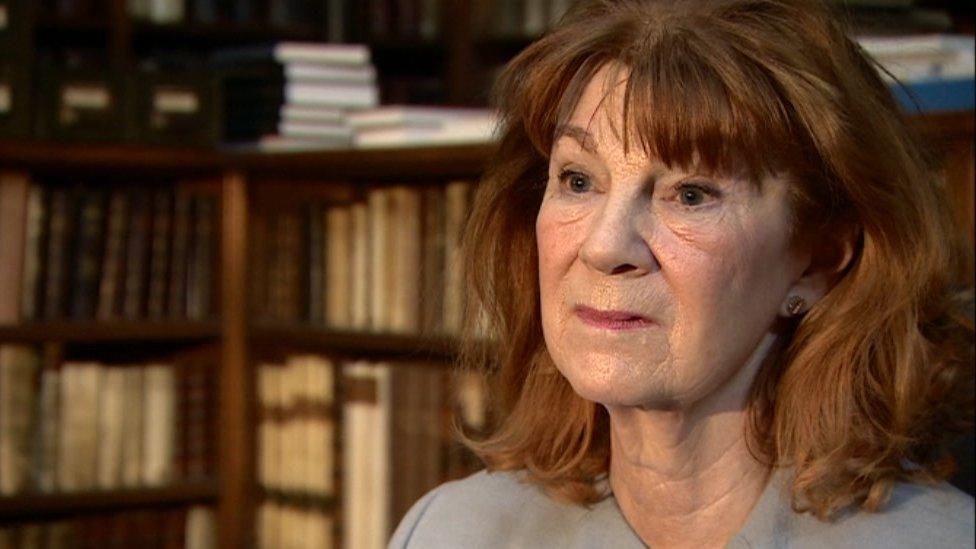
Carol Parkinson, secretary of the Friends of Newman, has travelled to Rome for the canonisation
Cardinal Vincent Nichols, head of the Roman Catholic Church in England and Wales, said: "A canonisation is always an encouragement, so it's a declaration that people, from so many different walks of life, can achieve the kind of greatness that inspires the rest of us."
Carol Parkinson, secretary of the Friends of Newman, lives in Birmingham and has travelled to Rome for the canonisation. She said: "It's a very special time, people feel very emotional about it. When we heard that he was going to be made a saint, many people were in tears and just so excited they couldn't believe what was going on.
"The work the cardinal did here continues. He worked in prisons, his group of Oratorians worked with people in hospitals, in schools. He was a friend to everybody on the streets, to people in high places and power, with the poor, the rich, the famous, the unknown. And that work still goes on through the Oratory - his memory has never been forgotten."
- Published13 February 2019
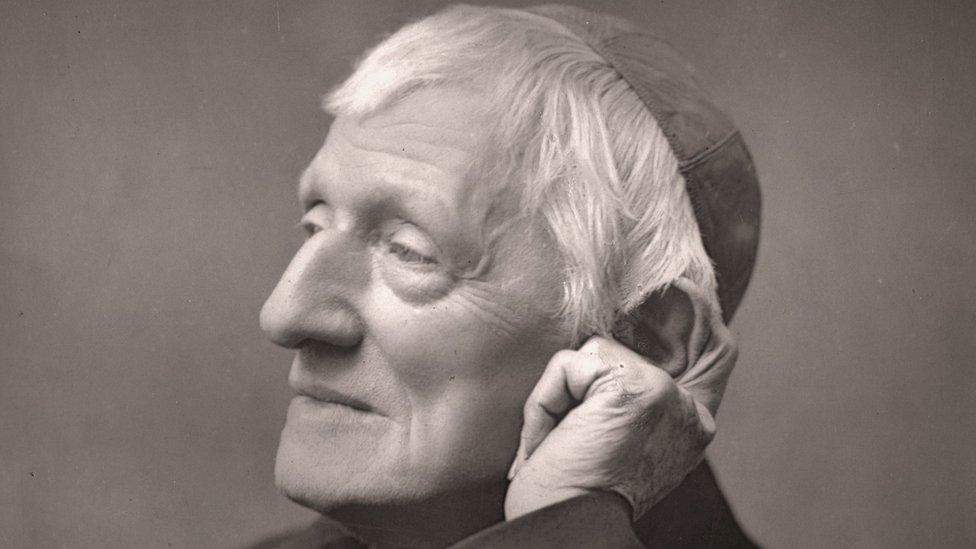
- Published13 September 2010
